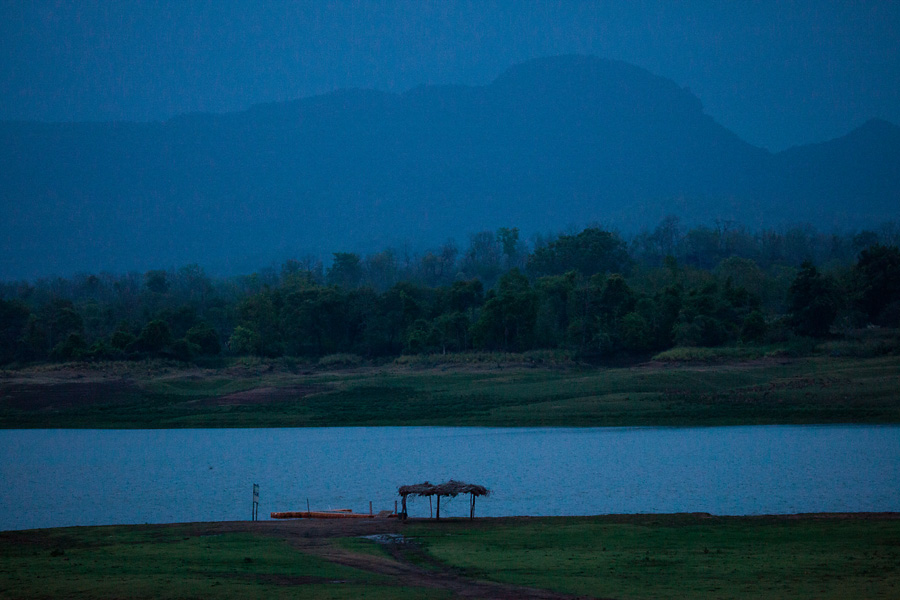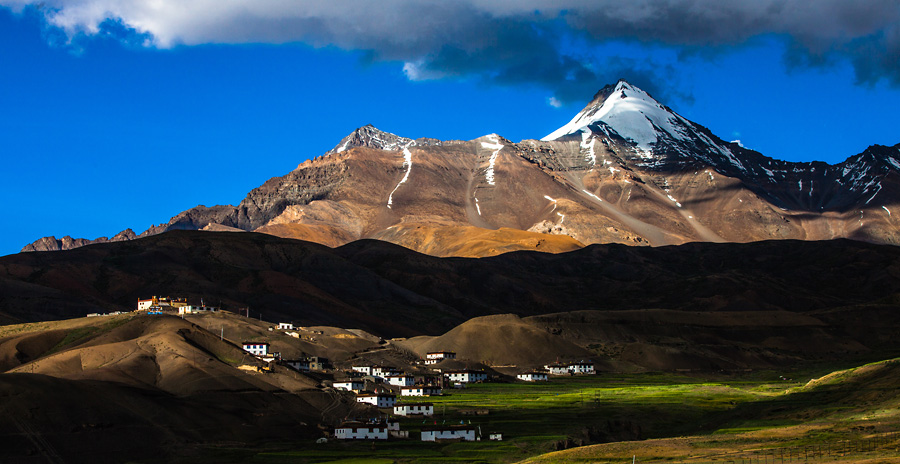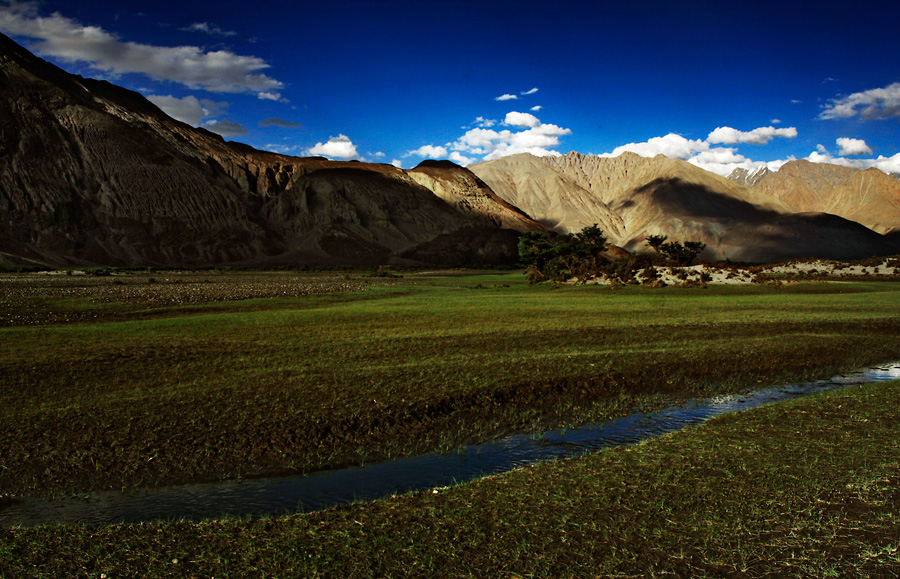In the second half of June, I travelled with Pugdundee Safaries through the wilderness of Madhya Pradesh, seeing life in the jungles and witnessing some fairy-tale-like events unfold in front of my eyes.
 It was dark when I arrived in Satpura. I couldn’t see much, but the absence of cellphone networks gave me hint of what I should expect. The next morning, we headed out when it was still dark, depriving me of the details of the place where I was staying. There were words spoken previous night–about a jamun tree, the river waters that surrounded us and the animals that roamed the region. They would have to wait for the afternoon until I came back from our sortie into the protected areas of Satpura National Park.
It was dark when I arrived in Satpura. I couldn’t see much, but the absence of cellphone networks gave me hint of what I should expect. The next morning, we headed out when it was still dark, depriving me of the details of the place where I was staying. There were words spoken previous night–about a jamun tree, the river waters that surrounded us and the animals that roamed the region. They would have to wait for the afternoon until I came back from our sortie into the protected areas of Satpura National Park.
The onset of monsoons and the eruption of life
Light seeped in from the sky as we waited at the office of the forest-department for our permits. A long ribbon of glint on earth revealed the backwaters of Tawa River that flowed between us and the park. Beyond, the land rose quickly to form the hills of Satpura Ranges, now covered in tender greenery that had erupted after the first rains of the season. The skies were decorated with patches of clouds and the ground was moist with the night’s precipitation. Monsoon had imprinted its signature, assertively declaring the end of summer and rekindling the fecundity of the forest.

How is it to live in a village at the base of a 20,000 feet high mountain forever covered in snow? How does one endure winter temperatures that can go down to -20C or lower? What is like to be in the company of yaks in summer and snow-leopards in winter? What does it take to survive in such a place for centuries, when modern facilities did not exist? I went to Langza to find answers.

Langza Village, with 6,300m high Chau Chau Kang Nilda Peak in the background.
Langza is no ordinary village. Located above 14,000 feet in Spiti Valley at the crossroads between Tibet and India, where the sun shines strongly over a brown treeless mountainscape in summers, where no rain falls during the monsoons and the winter’s snow can hide your footprints for four months, people have lived for a millennium with little interaction with the outside world. Before the modern world could connect with the people of Spiti, they lived an isolated, nearly self-subsistent life depending on their crop of barley for cereals and livestock for every other needs. They worked hard through the summer months, growing the year’s food and herding their sheep into the high-altitude meadows. The barren winters were for a slower pace of life, for festivities, celebrations and weddings, where barley chang flowed free from a yak-horn cup and the feet moved freely to the rhythm of drums. Only the strongest and the bravest travelled far and wide, to procure salt for the meal and timber for the houses. Everything else was made at home.
I found my ideal do-nothing place in Ladakh’s Nubra Valley. It was a place for long walks in the meadows, reading books with a cup of tea in a garden chair, eating seabuckthorn fruits on the riverbed, relishing apricots straight off the tree, hiding behind the bush watching a herd of Bactrian Camel in the wild, chasing shepherds, walking along the river and watching sunsets while listening to sweet sound of the flow. The days in Nubra were filled with activity and yet I wasn’t really doing anything.
A wise man once said, “Happiness is like a butterfly which, when pursued, is always beyond our grasp, but which, if you will sit down quietly, may alight upon you.” Travelling has some semblance with this statement. If we run from place to place seeking excitement and new experiences, those pleasures always seems to be someplace other than where we are. We humans need change of place at times, but making it a mission to keep changing places probably doesn’t work. The proverbial butterfly requires that you rest.

That place to rest, I found in Hunder. It’s a tiny village in Ladakh’s Nubra Valley housing a few dozen families, and when I went there seven years ago, had only a few dozen tourists. My guest house had a room big enough to play badminton, and outside in the garden, you could actually play football. The garden, however, was put to a more idyllic pursuit. With a book in one hand and a cup of tea in the other, I could sit under the apricot trees and while away the entire day, sometime shifting into the sun and sometimes returning to shade. And when I had enough of the book, there were other hedonistic pursuits that are hallmark of an aimless traveller.
 It was dark when I arrived in Satpura. I couldn’t see much, but the absence of cellphone networks gave me hint of what I should expect. The next morning, we headed out when it was still dark, depriving me of the details of the place where I was staying. There were words spoken previous night–about a jamun tree, the river waters that surrounded us and the animals that roamed the region. They would have to wait for the afternoon until I came back from our sortie into the protected areas of Satpura National Park.
It was dark when I arrived in Satpura. I couldn’t see much, but the absence of cellphone networks gave me hint of what I should expect. The next morning, we headed out when it was still dark, depriving me of the details of the place where I was staying. There were words spoken previous night–about a jamun tree, the river waters that surrounded us and the animals that roamed the region. They would have to wait for the afternoon until I came back from our sortie into the protected areas of Satpura National Park.

